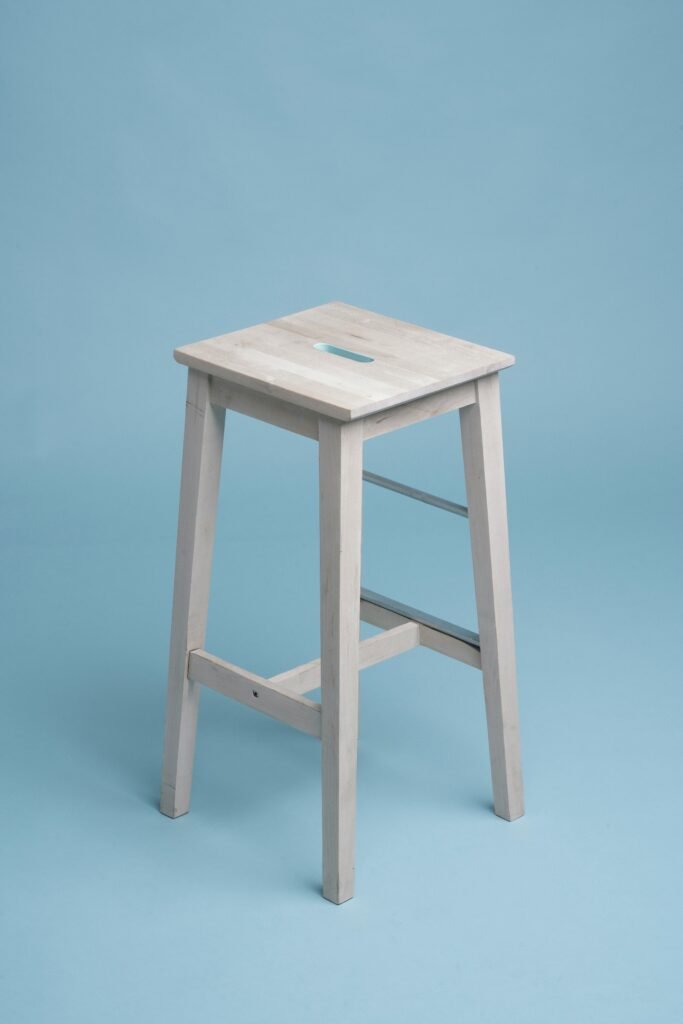Importance of Sustainable Product Development
Nowadays, diving into sustainable product development isn’t just about keeping up with the Joneses; it’s about making sure your brand thrives and stands the test of time. By weaving sustainability into the fabric of your business, you align with what buyers care about today, step up your game against competitors, and do some good for the planet and its people too.
Three Pillars of Sustainability
Sustainability is built on three solid pillars: economic, social, and environmental. Each one packs a punch in tackling the world’s pressing problems, stretching far beyond saving trees and whales (Enel). Getting the hang of these categories will give you the inside track on building sustainability into every step of your product development.
| Pillar | Description |
|---|---|
| Economic | Centers on smart money moves and keeping the business in the black. |
| Social | About playing fair with staff and giving back to your community. |
| Environmental | Cuts down on waste and cherishes the earth’s resources. |
Economic Pillar in Sustainability
The economic pillar is all about weaving responsible spending into every move you make in business. Think about sustainability when you’re planning products and watch your profits climb, all while sparking new ideas. Being savvy with resources can chop down costs, which is a win-win for your finances.
Social Pillar in Sustainability
With the social pillar, it’s about earning the thumbs-up from your team, clients, and the folks around you. Treating your crew right, having a chat with the local community, and keeping ethics front and center in your supply line is key. A happy workplace and active community ties can boost brand loyalty and bump up your position in the market (Investopedia).
Environmental Pillar in Sustainability
The environmental pillar is heavy on shrinking your carbon mark, trimming the fat on packaging, saving water, and showing Mother Nature some love. Cut back packaging not just for the earth’s sake, but for your budget, too. By designing products that are green from the get-go, you keep pollution in check, fight climate change, and even stir the pot on circular economies. Aim to ensure your products tick off safety and eco-friendly boxes right at the design stage (Investopedia; European Environment Agency).
Weaving these three sustainability pillars into how you dream up and roll out products is key for long-lasting success. Choosing sustainable goals doesn’t just pilot your brand toward what people want—it also sets up a blueprint for growth that’s got a heart.
Sustainable Development Practices
Making sustainable development a part of your biz game plan is crucial if you’re looking to match eco-friendly goals with your products. You might want to try a few tricks like cutting down on carbon emissions, trimming packaging waste, and being smart about water use to boost your green efforts.
Decreasing Carbon Footprints
Slashing carbon footprints is a big deal in sustainable product development. You can take steps to cut down on greenhouse gases, affecting the whole kit and caboodle of your product’s life span. Think about using sustainable stuff, tweaking your transportation routes, and putting cash into energy-efficient gear to slash emissions.
| Go-To Move | What’s It About | How It Helps the Planet |
|---|---|---|
| Earth-Friendly Materials | Use stuff that’s kinder to the Earth during production | Slashes pollution from making stuff and stops resources from vanishing |
| Energy-Saving Tech | Get technology that drinks less juice | Shrinks carbon footprint in daily ops |
| Green Travel Routes | Streamline logistics to guzzle less fuel | Cuts emissions from getting stuff from A to B |
Going green like this not only makes the planet happier but could save you a pretty penny down the line.
Reducing Packaging Waste
Another solid eco move? Cut down on packaging garbage. Slimming down on packaging does the planet a solid and might save you bucks on materials. By going for materials that can be recycled or broken down naturally and crafting products with just enough packaging, you’re helping pave the way to a greener tomorrow.
| Packaging Trick | Explanation | Eco Win |
|---|---|---|
| Bare-Bones Packs | Stick to just the essentials in packaging | Cuts down on the junk piling up at dumps |
| Recyclable Choices | Opt for stuff that can be recycled | Boosts recycling and cuts landfill clutter |
| Clever Packaging Designs | Make packs that can be reused or repurposed | Gives packaging a longer, useful life |
For the lowdown on why sustainable packaging matters, check out our product development best practices.
Water Conservation
Water-saving measures are no small potatoes when it comes to sustainable practices. By keeping an eye on water use in your production process, companies can make a big splash in their local surroundings. Techniques like recycling water, gathering rainwater, and using smart irrigation systems help you cut down water waste.
| Water-Saving Moves | What’s It About | What You Can Save |
|---|---|---|
| Water Reuse Tricks | Use water more than once in making processes | Chops down water use overall |
| Catching Rain | Collect rainfall for watering plants and other non-drinking needs | Lowers reliance on city water |
| Smart Watering Systems | Use clever irrigation methods | Cuts down on water waste in farm supplies |
Adding these steps into your product game plan not only ties in nicely with your eco-goals but also boosts your corporate good-guy image. For a deeper dive into how you can track these green efforts, swing by our article on product development metrics.
Business Benefits of Sustainability
Jumping on the sustainability train isn’t just about saving the planet—it’s about boosting your business mojo, too. Let’s break down how going green can mean more green in your wallet.
Financial Gains from Sustainable Products
Who knew being eco-friendly could fatten your wallet? Sustainable products are rockin’ the sales charts. In fact, these products are zooming past their not-so-green competition, racking up sales that are growing over five times faster. By 2019, they scored around $114 billion in sales—a solid 29% hop since 2013 (HBS Online).
| Sustainability Aspect | Financial Performance |
|---|---|
| Sales Boost (2013-2019) | 29% increase |
| Earnings in 2019 | $114 billion |
| Speed of Growth | 5 times faster |
Going green can give your profits a healthy glow—and a jumpstart!
Long-Term Benefits of Sustainability
Thinking ahead with sustainability in mind is like hitting the jackpot for the future. Not only can you watch your sales skyrocket, but your employees are more likely to stick around. About 70% of workers say a good sustainability program gives them extra reasons to hang tight with a company in the long run.
Stick some green thinking into your business to strengthen your market stance while creating a workforce that’s got your back for the long haul.
| Long-Term Gains | What’s in It for You |
|---|---|
| Keeping Employees Happy | 70% influenced to stay put |
| Building Trust | Customers keep coming back for more |
| Winning at Marketing | Aligning with the values of today’s buyers |
Employee Retention and Sustainability
Want your employees to stick around and maybe even whistle while they work? Sprinkle in some sustainability. Companies that make green moves often craft a workspace that feels worthwhile and genuine. When employees see their values reflected in their work environment, they’re more likely to stay loyal and happy.
Brands pushing products with Environmental, Social, and Governance (ESG) claims are also banking on customer loyalty, nailing 32% to 34% repeat purchase rates. Clearly, sustainability is a big deal for both employees and your customer base.
Having a sustainability-driven culture means you’re not just preaching—you’re practicing what you promote, which appeals to both inside and outside your company walls.
So, if you want to stay ahead of the curve, choose sustainable product development. Plus, feeling like a swell human is a sweet side effect. To kickstart your sustainability strategy, check out our guide on product development and management.
Successful Sustainable Companies
If you’re diving into eco-friendly practices for your company, check out how some trailblazers are doing it right. Today we’re shining a light on Rothy’s, Bank of America, and Etsy – each bringing their own flair to the green game.
Rothy’s Sustainable Initiatives
Rothy’s is shaking up the fashion scene by turning trash into treasure, literally. They craft snazzy shoes and accessories from used plastic bottles, having transformed about 70 million of them already. But they’re not stopping there. Their packaging is recycled, and they hitch a ride on green projects to offset the carbon footprint of their deliveries (HBS Online). Their approach not only sets a trend in eco-fashion but draws in those who want to look good while doing good.
| Initiative | Impact |
|---|---|
| Recycled Bottles Used | 70 million |
| Uses recycled packaging materials | Yep |
| Carbon offset partnerships | Ongoing |
Bank of America’s Catalytic Finance Initiative
Since 2014, Bank of America has been shaking things up with its Catalytic Finance Initiative. They’ve pledged a whopping $10 billion to tackle the big stuff, like clean energy, that needs a push. The bank is showing how the financial big guns can help nudge investment towards saving the planet (HBS Online).
| Year Launched | Total Committed | Focus Areas |
|---|---|---|
| 2014 | $10 billion | Clean energy, sustainability projects |
Etsy’s Carbon Emissions Offset Program
Hold onto your hats, Etsy has figured out how to make their shipping carbon-neutral! By teaming up with 3Degrees, they support a bunch of cool projects reducing carbon emissions. Think forest protection and wind farms, plus cleaner ways to make car parts. This not only scrubs Etsy’s shipping-related emissions but also boosts their image as a conscientious and savvy marketplace (HBS Online).
| Carbon Offset | Methodology | Projects Funded |
|---|---|---|
| 100% of shipping carbon emissions | Team up with 3Degrees | Forest protection, Wind and solar farms |
These companies are not just helping Mother Earth, but also beefing up their reputations and market clout. As you mull over your sustainability game plan, use these examples to guide your next moves. For more tips on shaping savvy strategies, check out our product development framework and new product development strategies.
Consumer Trends and Sustainable Products
Keeping up with how folks feel about green products is pretty crucial for business bigwigs, because the rise in craving for eco-smart choices is shaping not only what gets made but also how businesses run.
Growing Market for Sustainable Goods
Back in 2019, a whopping 73% of people worldwide were game to ditch their old habits for greener ways to do their bit for Mother Earth. Sales for eco-products perked up nearly 20% from 2014. This booming interest makes it a no-brainer for companies like yours to tweak things, making sure you’re churning out goods that tick the eco-friendly box for your customers.
| Year | Sustainable Product Sales Growth (%) |
|---|---|
| 2014 | 0 |
| 2015 | 5 |
| 2016 | 10 |
| 2017 | 15 |
| 2018 | 18 |
| 2019 | 20 |
Consumer Willingness to Pay for Sustainability
More and more, shopping is about aligning with beliefs. Research shows folks are leaning towards products that brag about Environmental, Social, and Governance (ESG) qualities, with sales up 28% over the last half-decade, outpacing the 20% for those without such claims. This trend tells us that people are ready to spend on brands that mirror their values, meaning embracing sustainable production isn’t just good for the planet—it’s good for business, too.
Market Share and Sustainability
Going green ain’t just about being nice to the planet; it’s a solid business move, too. Companies with top-notch ESG ratings have been outrunning their rivals in terms of profits over the medium and long haul. For brands getting a hefty chunk of sales from their eco-friendly offerings, customers keep coming back, with repeat buys sitting between 32% and 34%. This connection between green efforts and brand loyalty doesn’t just boost your image but your bottom line, too, and sets your company up for a longer, better run.
Weaving these insights into your product development duties can smooth your way in a tight market. Jump on the eco bandwagon—it’s what’s happening now, not just a shiny hope for tomorrow.
Collaboration for Global Impact
Building a brand that lasts often means working together with a mix of folks you wouldn’t usually expect, like rivals, nonprofits, and money folks. This teamwork can spark big shifts and get sustainable products rolling across boardrooms.
Teaming Up with Rivals and Nonprofits
Sometimes, it’s not about beating the competition, but joining forces for a greener planet. Imagine two big brands putting differences aside to share tricks of the trade and face the big environmental issues head-on. Pairing up with nonprofits ain’t a bad gig either—they bring clout and know-how to the table.
Think about a business that links up with an environmental group to sort out where they’re getting stuff from or to get the word out about going green. These kinds of alliances can boost your reputation and show that your company’s got skin in the sustainability game—something eco-friendly shoppers really dig.
Getting a Grip on ESG Ratings
Understanding the A, B, Cs of ESG (that’s Environmental, Social, and Governance) is a big deal if you’re all about sustainable growth. Companies scoring high in ESG tend to outshine their rivals over time. It’s about more than just going green—it’s about proving it and shouting it from the rooftops.
Scoring well here can give your brand a gold star, making it the apple of investors’ eyes—especially those who care where their money goes. In the U.S., savvy fund managers are already on this train, using ESG to pick stocks in 2022.
The Scoop on Sustainable Investments
Investments in sustainability took a dip from $17.1 trillion to $8.4 trillion between 2020 and 2022 ’cause some rules changed about what counts as green. But looking ahead, things are still looking up. Companies that play it straight and focus on real-deal sustainability efforts can stay ahead of the pack.
When over half of a company’s cash comes from stuff with an ESG twist, their customers tend to stick around, coming back for more about 32 to 34 percent of the time. This shows folks love what’s green and they’re voting with their wallets. Turning sustainability talk into action can help you win loyal customers and stack the dollar bills for future growth.
Bottom line? Teamwork, smart use of ESG scores, and sustainable investments are where it’s at. This way, you’re not just helping the environment; your balance sheet will thank you. For more tips and tricks, check out our pages on product design and development and new product development strategies.
Impactful Sustainable Product Development
Growth of ESG-Related Claims
More brands are jumping on the sustainability train, focusing on Environmental, Social, and Governance (ESG) claims. This isn’t just for show; it’s about real gains. Research says products with these claims have a 1.7% boost in their annual growth rate compared to those running the usual route (McKinsey). This shows how much folks are leaning towards stuff that’s earth-friendly.
| Type of Claim | Growth Edge |
|---|---|
| Products with ESG Claims | 1.7% |
| Products without ESG Claims | 0% |
Impact of Multiple ESG Claims
Turns out, packing several ESG claims into one product is a gold mine. Items showing a blend of social, environmental, and governance angles have growth rates almost doubled compared to their simpler counterparts. This tells you a lot about how folks see these multi-claim products as more real and trustworthy (McKinsey).
| Number of Claims | Growth Speed Bump |
|---|---|
| Multiple Claims | 2x increase |
| Single Claim | Default speed |
Consumer Loyalty and ESG Claims
There’s a strong link between going green and keeping customers happy. Brands getting over half their sales from ESG-marked products see impressive repeat business of 32 to 34 percent. This shows a clear connection between solid ESG efforts and customer stickiness (McKinsey).
| Sales from ESG Products | Bought Again Rate |
|---|---|
| > 50% | 32-34% |
Pouring effort into eco-friendly product development not only boosts your brand’s good name but also wins customer loyalty, racking up a solid hold in the market. Want to get cracking on ESG strategies? Check out our take on new product development strategies and product development best practices.
Designing Safe and Sustainable Products
Putting safety and sustainability at the heart of product development makes your offerings not just consumer-friendly but also kind to the planet and our communities. Here, we’ll chat about the “Safe and Sustainable by Design” idea, how to check if a product is all it claims to be, and a scoring thingamajig to weigh up how green and safe these products really are.
Safe and Sustainable by Design Concept
The Safe and Sustainable by Design idea is about getting safety and sustainability mixed right into the product creation from the get-go. It aims to cut down on nasty chemicals, lower greenhouse gases, and encourage more recycling. The idea is to cover safety and green needs all the way through a product’s life, beginning to end (European Environment Agency).
By weaving this mindset into your product creation, you’ll boost product safety, keep pollution at bay, and help tackle climate change. The aim is to check product performance through tight safety and green criteria at the design phase. This forward-thinking approach backs the move to a circular economy, where recycling rules and waste gets the boot.
Methodologies for Assessment
There’s a range of ways to see how your products measure up in the safety and sustainability stakes. One standout is the Product Environmental Footprint (PEF) from the European Commission’s peeps at the Joint Research Centre. This trusty tool ticks through:
- Resource use
- Impacts on climate and ecosystems
- Health hits from air pollution
Going with the PEF means your products can stick to top-notch sustainability practices on all fronts (European Environment Agency).
The Organisation for Economic Co-operation and Development (OECD) is also in on creating a guide to size up product safety concerning chemicals hustled and let fly throughout their lifetime. It’s all about swapping dangerous stuff for way less harmful options, pumping up both the safety and sustainability of your products (European Environment Agency).
Scoring System for Sustainable Products
To line up and rank those promising sustainable products, a scoring system can come in really handy. This setup gauges products against safety and green benchmarks, letting you single out the top picks. The steps go like this:
- Set some minimum performance markers for safety and sustainability.
- Give out scores based on how each product meets these marks.
- Sort the products based on their total scores.
This organized check makes sure only the products that do well in safety and sustainability go forward to the next phases of development, boosting decisions throughout the whole product development process in marketing.
By adopting this solid approach to building safe and sustainable products, you’ll not only spruce up your brand’s standing but also lend a hand toward global sustainability targets.



















